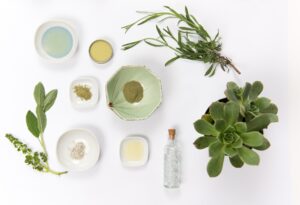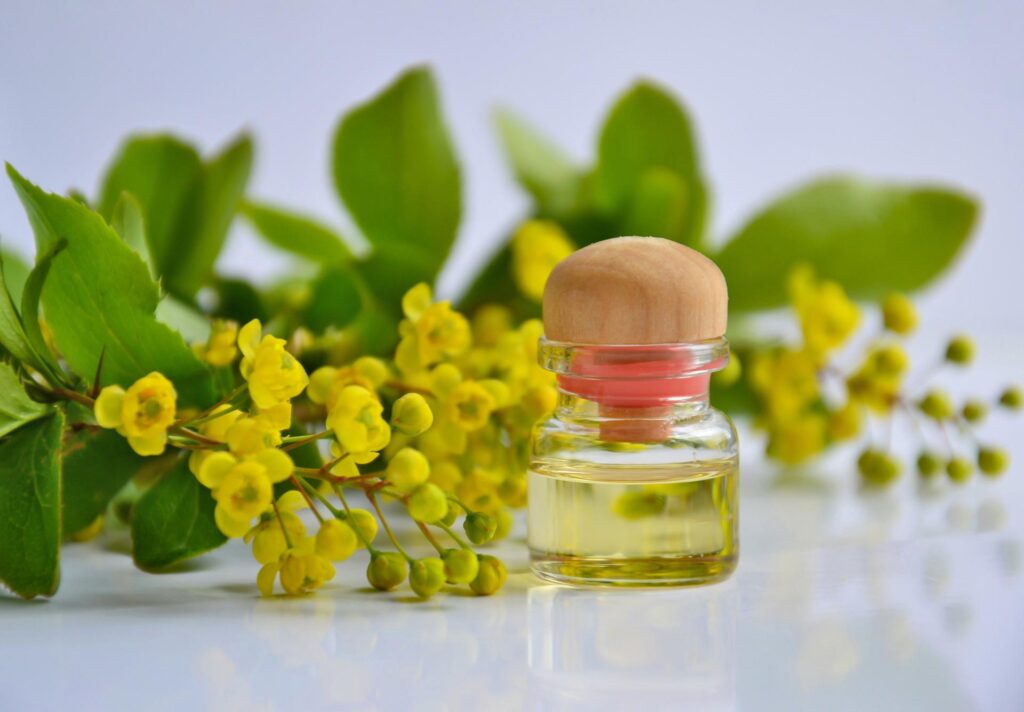One of the principal reasons for use of a lipid material in cosmetics is its emolliency. The term »emollient« is of Latin origin meaning a material capable of smoothening dry and wrinkled skins and maintaining these conditions for a certain period of time. Water alone is capable of exhibiting such effects but the effects are short lived due to its quick evaporation.
Presence of essential fatty acids (EFA) like, linoleic acid (n-6), u-linolenic acid (n-3), y-linolenic acid (n-6) in the oils is often an important criterion for selection. Effect of such EFA’s on human physiological systems through oral intake is well documented. They also contribute to beneficial physiological activities when applied topically through creams or lotions.
 Both natural oils and exotic butters are widely used in cosmetic products and neutraceuticals. Evening primrose oil (EPO) (Oenothera biennis) and borage oil (Borago officinalis) are very common natural oils, used primarily because of their high content of gamma linolenic acid. Evening primrose oil and borage oil contains about 9-11 % and 18-23 % of gamma linolenic acid respectively. Use of oils with high amount of polyunsaturated fatty acids like camelina oil (Camelina sativa), blackcurrant seed oil (Ribes nigrum) and flax seed oil (Unum Usitatissimum) for cosmetic applications are also prevalent. Usually obtained from tropical jungle crops, exotic butters like shea (Butyrospermum Parki), mango (Man· gifera indica), sal (Shorea robusta) are among the commonly used exotic butters for skin care products. They are rich in symmetrical monounsaturated triglycerides which are solid or semisolid at room temperature. They have narrow melting points and have appreciable viscosity and emulsion stability. The exotic butters are also rich in unsaponifiables such as sterols, ubiquinones, fatty alcohols, fatty esters, triterpines etc. Application of natural oils and butters in various cosmetic formulations is a great challenge in combating oxidation.
Both natural oils and exotic butters are widely used in cosmetic products and neutraceuticals. Evening primrose oil (EPO) (Oenothera biennis) and borage oil (Borago officinalis) are very common natural oils, used primarily because of their high content of gamma linolenic acid. Evening primrose oil and borage oil contains about 9-11 % and 18-23 % of gamma linolenic acid respectively. Use of oils with high amount of polyunsaturated fatty acids like camelina oil (Camelina sativa), blackcurrant seed oil (Ribes nigrum) and flax seed oil (Unum Usitatissimum) for cosmetic applications are also prevalent. Usually obtained from tropical jungle crops, exotic butters like shea (Butyrospermum Parki), mango (Man· gifera indica), sal (Shorea robusta) are among the commonly used exotic butters for skin care products. They are rich in symmetrical monounsaturated triglycerides which are solid or semisolid at room temperature. They have narrow melting points and have appreciable viscosity and emulsion stability. The exotic butters are also rich in unsaponifiables such as sterols, ubiquinones, fatty alcohols, fatty esters, triterpines etc. Application of natural oils and butters in various cosmetic formulations is a great challenge in combating oxidation.
Oxidation of oils and fats
The oil or fat content of a cosmetic product can vary from 2-15 % in case of body lotions and creams while it can be 100 % in case of massage oils. It is very important that only the best quality oil or fat is used in any cosmetic formulation »Quality« of a commercial oil
 or fat is very often measured through its oxidative stability. Oxidation of a lipid is a very common and serious problem for any fat containing product, food or cosmetic. Characteristic changes linked with oxidative degradation of oils and fats include development of malodors, unpleasant tastes and might lead to change of colour, increase in viscosity, specific gravity and solubility. The mechanism of autoxidation has postulated by many authors. Autoxidation is a natural free radical process between molecular oxygen and the unsaturated fatty acids of an oil which leads to the formation of short lived hydroperoxides (primary oxidation products). The hydroproxides readily break down to form alcohols, aldehydes, ketones and other hydrocarbnons. These secondary oxidation products impart rancid odor and taste. One way of preventing autoxidation is addition of antioxidants. The interest of the food and cosmetic industry in phenolic antioxidants is primarily related to the extension of the shelf life of the various consumer products. In the present global market, there is hardly any food or cosmetic product, semi-finished or finished, which does not contain any added preservatives. The antioxidants used are mostly synthetic, namely butylated hydroxytoluene (BHT), butylated hydroxyanisole (BHA}, ascorbyl paImitate, tertiary butylhydroxyquinone (TBHQ) etc. But the consumers’ awareness of the possible toxic side effects of synthetic antioxidants and preference for natural additives, has led to more detailed investigations and applications of natural herb extracts as antioxidants.
or fat is very often measured through its oxidative stability. Oxidation of a lipid is a very common and serious problem for any fat containing product, food or cosmetic. Characteristic changes linked with oxidative degradation of oils and fats include development of malodors, unpleasant tastes and might lead to change of colour, increase in viscosity, specific gravity and solubility. The mechanism of autoxidation has postulated by many authors. Autoxidation is a natural free radical process between molecular oxygen and the unsaturated fatty acids of an oil which leads to the formation of short lived hydroperoxides (primary oxidation products). The hydroproxides readily break down to form alcohols, aldehydes, ketones and other hydrocarbnons. These secondary oxidation products impart rancid odor and taste. One way of preventing autoxidation is addition of antioxidants. The interest of the food and cosmetic industry in phenolic antioxidants is primarily related to the extension of the shelf life of the various consumer products. In the present global market, there is hardly any food or cosmetic product, semi-finished or finished, which does not contain any added preservatives. The antioxidants used are mostly synthetic, namely butylated hydroxytoluene (BHT), butylated hydroxyanisole (BHA}, ascorbyl paImitate, tertiary butylhydroxyquinone (TBHQ) etc. But the consumers’ awareness of the possible toxic side effects of synthetic antioxidants and preference for natural additives, has led to more detailed investigations and applications of natural herb extracts as antioxidants.


